Cub Scouts
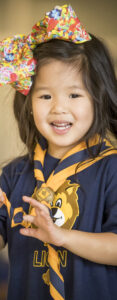


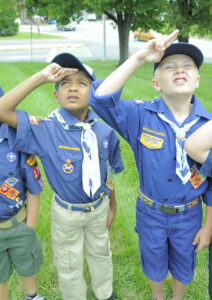
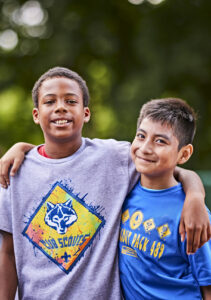
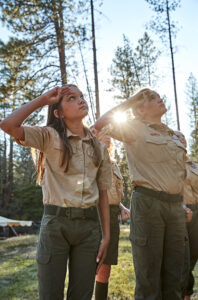
Scouting for Children
Cub Souts creates opportunities for your family to do fun things together—because together—we can all grow into our very best future selves!
Within each “pack” Scouts are organized by grade-level “dens.” Dens may be gender-inclusive or gender-specific depending on the pack organization. Each den achievement year stands independent of the next, so a Cub Scout may join at any time. Activities are opportunities for families to spend time together. The packs and dens are led by adult volunteers called “akela.”
Cub Scout “adventures” support the growth and development of each Scout. They build friendships, learn how to respond to emergencies, gain confidence, and practice healthy living. Scouts learn about the world around them, engage in STEM projects, serve others, help conserve nature, and explore topics which interest the den. Cub Scouts enjoy the outdoors and attend weekend campouts with their families.
There are 9 Packs within the Thunderbird District. Each pack typically draws its membership from one or more elementary schools, and Scouts often prefer to be in a pack with their classmates. Families, however, may join any pack they choose regardless of school boundaries. At the start of each school year, packs host a Join Scouting Night to introduces themselves and their programs to prospective scouting families.
Cub Scouts can earn the “Arrow of Light” patch which may be worn on a BSA uniform, yet Cub Scouting experience is not needed for participation in BSA.
To learn more about our packs, visit our Pack Directory.
Who can join Cub Scouts?
Cub Scouts is a family program which welcomes children of all genders grades kindergarten through fifth grade. Most packs are gender-inclusive, yet there may be some that are gender-specific.
When can I join?
Packs accept new members year-round.
- PreK and earlier – As a family program, younger siblings are invited to attend many pack events. However, there is no program available for children prior to kindergarten.
- Kindergarten – Officially, the Lion program begins on the first day of kindergarten. In practice, many packs welcome new members the summer prior to kindergarten. Contact the pack you are interested in for their specific policies.
- First grade through Fourth Grade – Join at any time!
- Fifth Grade – Most fifth graders with Cub experience “cross over” to join a BSA troop in January through March of fifth grade. Contact your local pack to determine if your best scouting experience will begin in Cub Scouts or Scouts BSA.
- After fifth grade – As a family program, older siblings are often invited to attend many of the pack events. Older Siblings enrolled in scouts BSA with First Class rank are greatly appreciated as Den Chiefs!
How do I register?
Register and pay national dues at https://beascout.scouting.org/. You will pay pack dues directly to the pack.
What is a pack?
When you become a Cub Scout, you and your family become part of the Pack. You will help the pack GO, and the pack will help you GROW. The pack camps together. The pack serves their community together. The pack celebrates each other’s accomplishments together.
What is a den?
A den is a group of Scouts in the same grade level which working together to earn their Rank patch. Cub Scout “adventures” support the growth and development of each Scout. They build friendships, learn how to respond to emergencies, gain confidence, and practice healthy living. Scouts learn about the world around them, engage in STEM projects, serve others, help conserve nature, and explore topics which interest the den.
I just joined, can I earn the ranks I missed?
Every rank level focuses on Cub Scouting values tailored specifically to the maturity, interests, and needs of the grade level it serves. Scouts are not able to earn ranks they “missed” as a repetition of those values at a younger level isn’t necessary. A Sout does not need to earn any other rank to earn their current rank. The highest rank, the Arrow of Light, does not require Cub Souting ranks or experience prior to fifth grade.
Scouts BSA
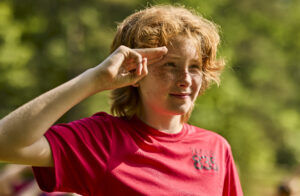
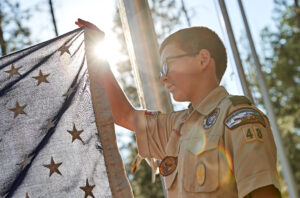

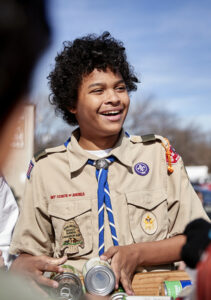

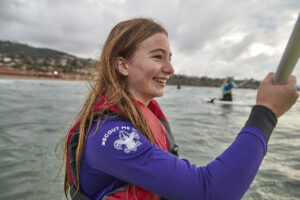
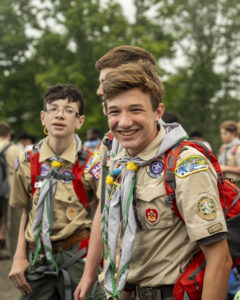

Scouting for Youth
Scouts BSA welcomes youth of all genders ages 10 through 17. Each troop is gender-specific. Scouts are organized into “patrols” within the troop. Troops typically choose to organize patrols either by a Scout’s age or by a Scout’s rank. BSA Scouting emphasizes youth leadership; Scouts plan their own activities and calendars. Adult volunteers advise Scouts in their planning and learning.
BSA Scouts helps youth develop academic skills, self-confidence, ethics, leadership skills, and citizenship skills. The merit badge program encourages Scouts to try new things as mentored by a subject expert. Scouts provide service to others and practice being conservation-minded. BSA Scouts promotes healthy living and physical fitness. A Scout learns important life skills such as communication and cooking. Patrols may plan weekend and week-long campouts, physical fitness and sports activities, or meetings or outings featuring any topic which interests them.
There are 11 Troops within the Thunderbird District: Troop 19 welcomes girls who scout and the other troops welcome boys who scout. Being youth-led, each troop has different interests and different emphasis in its program. Prospective Scouts should visit with several troops to find one that matches their own scouting goals. Each October, the district hosts “Scouting 101” in which each troop showcases itself to prospective BSA Scouts.
To learn more about our troops, visit our Troop Directory.
Is Cub Scouting experience needed?
Prior scouting experience is not expected of new troop members. Former Cub Scouts may celebrate their previous experience by continuing to wear their “Arrow of Light” patch on their uniform. The primary advantages of Cub Scouts prior to Scouts BSA is memorization of the Scout Oath and Scout Law, some previous camping experience, and rudimentary scoutcraft skills. The Scout and Tenderfoot ranks will help teach a new troop member everything a former Cub might know — and more.
When can I join?
Troops accept new troop members year round.
- Younger than 10 – Cub Scouting is the program for this Scout.
- 10 years old – contact the troop you are interested in. Cub Scout to BSA Scout transition in fifth grade, usually ages 10 to 11, and the Scoutmaster can help determine where your Scouts best experience will be and exactly when to join a troop.
- 11 to 17 – sign on up!
- 18 or older – someone 18 or older is longer eligible to participate in a Scouts BSA as a youth member. Consider instead Venturing and Sea Scouts both of which accept members from 14 to 20 years old.
How do I register?
Register and pay national dues at https://beascout.scouting.org/. You will pay pack dues directly to th epack.

